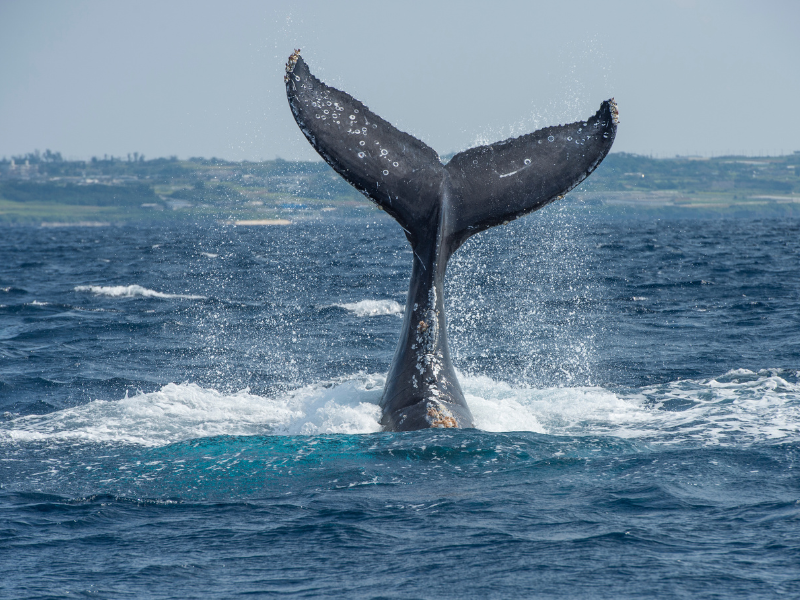Climate Change Weekly #146
The summary for policymakers released in early November by the United Nations’ Intergovernmental Panel on Climate Change has once again betrayed the science found in the body of the report. In addition, its conclusions and warnings fly squarely in the face of measurable evidence concerning the state of the climate.
The European Institute for Climate and Energy (which goes by its German acronym, EIKE) has done a careful analysis of the IPCC summary for policymakers (SPM) and its synthesis report. These documents purportedly reflect the findings of the IPCC’s three volumes assessing the science, vulnerabilities, and possible responses to climate change.
The SPM includes significant contradictions, simplifications, and even distortions of the science contained in the full reports. In addition, on major points, its conclusions and warnings stand in stark contrast to almost all of the measurements and trends observed in nature.
The EIKE report looks at nine specific claims made in the IPCC’s SPM and synthesis report and finds fault with each one. The claims concern air temperature, sea level rise, ocean temperature, storms, polar ice, extreme weather, crop yields, species extinctions, and man’s responsibility for climate change.
Concerning air temperature and temperature rise, the IPCC’s SPM warns of dramatic temperature rises under business-as-usual scenarios over the next century. The actual range of temperature rise reported in the IPCC’s science reports, however, is as little as 0.3° to a high of 4.8° Celsius, a 16-fold difference, with all values along the scale equally likely. In other words, actual temperature rise is just as likely to be negligible as it is to be dramatic. And all of this ignores a critical real-world observation: Despite a continued rise in CO2 emissions, temperatures have not risen for the past 18 years.
In addition, the SPM claims “the global mean sea level in the 21st Century continues to climb, very likely with a higher speed … probably in the range of 26 to 82 cm …” The reality is sea level rise over the past 200 years has not accelerated, and over the past decade the rate of rise has declined.
The IPCC’s SPM hints extreme weather events have become more frequent and intense. Real-world observations disagree: Neither hurricanes, tornados, extreme rainfall events, nor droughts have increased measurably in number or intensity.
The story is the same when it comes to crop failures. While the IPCC’s SPM warns of a decline in staple crops including wheat and corn, each year new records are being set on crop production. Some of IPCC’s own work has shown increased CO2 levels are producing an increase in plant cover and crop growth.
In short, as the German magazine der Spiegel reported, “At the Intergovernmental Panel on Climate Change, Alarmism comes before Accuracy.”
SOURCE: European Institute for Climate and Energy (SDL Translation)
IN THIS ISSUE
Carbon storage costly, still unproved … Coal use undermines climate goals … Green policies prevent rise from poverty … Elections show climate change politically irrelevant … 2° increase not bad for life … Glacier studies show past climate as warm as today
CARBON STORAGE COSTLY, STILL UNPROVEN
Power plants with carbon-capture and storage technology have never been proven to function on a commercially viable scale, yet beginning with more than $400 million in federal incentives, the Southern Co. undertook to build such a plant at an estimated price tag of $2.4 billion. Now Southern says the plant will need an extra $496 million to complete it, bringing the total price tag to $6.1 billion, with customers on the hook for $167 million of the additional costs. Even upon completion, it is unclear the technology will work as advertised.
SOURCE: The Washington Examiner
COAL USE UNDERMINES CLIMATE GOALS
While the United Nations’ Intergovernmental Panel on Climate Change (IPCC) is calling for a curb in coal production and use in order to slow climate change, worldwide coal use is surging. Coal is still used for the largest proportion of electric power production worldwide, and it is the least expensive, most widely available, and most reliable source of fuel for developing countries, where the growth in electric power is expected to skyrocket in coming decades. Australia is the world’s second largest coal exporter, and the number of coal mines there is increasing as production of coal is forecast to rise by 8 percent over just the next two years.
SOURCE: Reuters
 |
GREEN POLICIES PREVENT RISE FROM POVERTY
Green voters and activists claim they have the moral high ground, but they don’t. The policies they push do little to improve the environment and come with a high human cost. The cost of climate policies falls heavily on today’s poor, preventing access to reliable safe energy, abundant healthy food, and economic progress. So we are sacrificing the lives and well-being of the poverty-stricken today to prevent the possibility of what may turn out to be negligible harm to wealthy people in the future. Hardly a morally defensible position.
SOURCE: The Global Warming Policy Forum
ELECTIONS SHOW CLIMATE CHANGE POLITICALLY IRRELEVANT
Tom Steyer and other environmentalists spent $85 million in a losing cause to help Democrats keep the Senate blue and make climate change a major campaign issue. Billionaire Steyer alone spent $74 million trying to make the Keystone XL Pipeline and global warming a wedge issue in select races around the country. Working through his political action committee, NextGen Climate Action, Steyer spent millions backing candidates in Colorado and Iowa. His spending was for naught, as Senator Mark Udall (D-CO) and Representative Bruce Braley (D-IA) – both of whom Steyer backed – lost to Cory Gardner (R-CO) and Joni Ernst (R-IA), who are likely to support the Keystone XL Pipeline. Despite spending an unprecedented amount of money, green groups saw the vast majority of their favored candidates in battleground states go down in defeat.
SOURCES: Breitbart.com and Watts Up With That?
2 ° INCREASE NOT BAD FOR LIFE
Climate alarmists argue a global temperature increase of 2° C or greater would be catastrophic. While computers spin out scary scenarios, we can look at the history of Earth and determine what the effect on life might be if Earth were warmer. The mean global temperature during the Cretaceous Period was 18° C, 4° C higher than today’s global temperature, and atmospheric CO2 levels were approximately 1,700 ppm, more than four times higher than today. The Cretaceous was a golden age for life. It hosted a bounty of life and saw a dramatic increase in biodiversity, including the emergence of the first flowering plants and the first appearance of mammals. Based on past experience, a modest warming may require a shift in some coastal infrastructure, but it should in no way be a threat to life or biodiversity.
SOURCE: Watts Up With That?
GLACIER STUDIES SHOW PAST CLIMATE AS WARM AS TODAY
Glacier melt is not new or unprecedented, and new glacier studies confirm the Roman and Medieval warm periods were as warm as or warmer than at present. Two papers looking at glacier expansion and contraction in the Alps, one covering the past 9,000 years and the second going back 1,600 years, show there was similar melting in the Alps during the Medieval warm period and the Roman warm period as today. One of those studies shows from 6,000 to 9,000 years before today, there was even greater, more extended melting – absent human cause. Despite alarmist predictions, alpine glaciers began expanding in 2013, and snow amounts in the Swiss Alps have been on the rise since 2000.
SOURCE: No Trick Zone
The Climate Change Weekly Newsletter has been moved to HeartlandDailyNews.com. Please check there for future updates!





